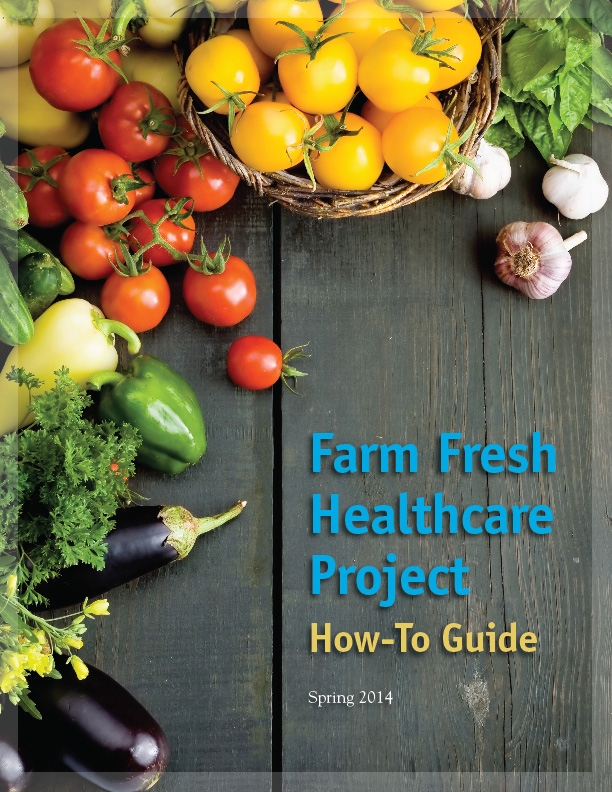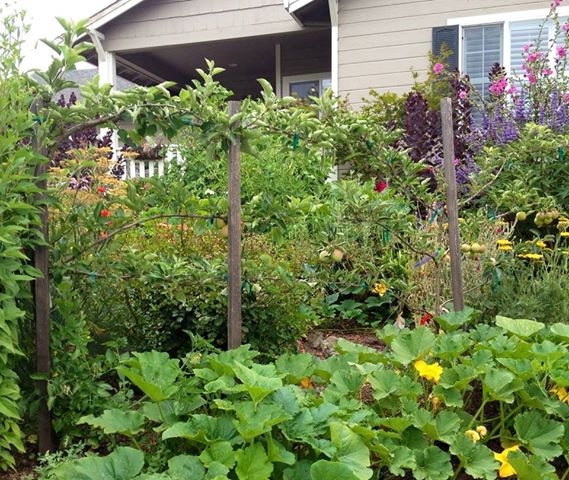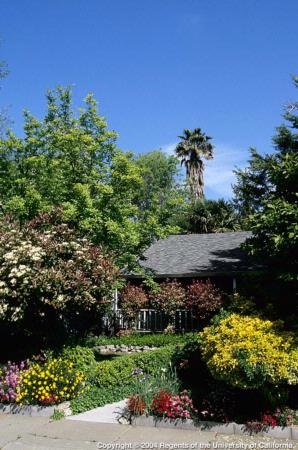Posts Tagged: local
Northern California farmers are helping hospitals practice what they preach
Inspired by an uptick of diet-related diseases and emerging antibiotic-resistant microbes, doctors are overdue when they insist that hospitals practice their prescriptions for healthy diets and healthier agricultural practices. Anything less would be a violation of their ethic to “first, do no harm.
However, transitioning hospital food service to what they would like their patients to eat has been a two-year struggle. Many institutions do not systematically provide higher budgets for food procurement just because their doctors insist. Organic or antibiotic-free foods are consistently more costly and seldom available in the form that foodservice facilities have grown dependent on: prewashed, precut and preportioned.
Nonetheless, lessons have been learned and six hospitals in the San Francisco Bay Area are sharing those in a How-To Guide based on two years of collaboration through the Farm Fresh Healthcare Project (FFHP). The guide describes how the hospitals were able to purchase almost 67,000 pounds of local produce from 10 family farmers who practice sustainable agriculture.
The guide features a photo of Capay Organic mandarins arriving at UCSF. The other hospitals in the project are John Muir Health, San Francisco VA Medical Center and Washington. (Stanford recently joined.)
Participating farms also include Coke, Durst Organic Growers, Las Hermanas, GreenSolar, Greene & Hemly, Dwelley, Zuckerman's, Casteneda Brothers, and Gowan Orchards.
The project and the guide is the result of a collaboration between Community Alliance with Family Farmers, Health Care Without Harm, and San Francisco Bay Area Physicians for Social Responsibility.
UCCE advisor sees cultural shift toward urban ag in Los Angeles
Surls is the "client" for a group of UCLA students that are tracking Los Angeles' urban ag. She said the students, called Cultivate L.A., contacted the county's 88 cities to investigate their municipal codes related to food production.
"Are bees allowed? Are chickens and other kinds of poultry allowed? Are goats allowed? So that's one of the outcomes of the project I'm very excited about," Surls said.
The information has been incorporated into a map of LA, which allows users to navigate local municipal codes and find out how urban ag is taking shape in their neighborhoods.
Surls hopes the information can be used to establish "best practices" Los Angeles County cities can use in adapting planning codes to become more consistent and more rational in their approach to urban agriculture.
"People are very interested in this. So there's been a cultural shift towards wanting urban agriculture and having more opportunities for very small scale food production," Surls told Paulas. "But the codes and the policies have not been keeping pace. Hopefully, all the research that's been done by the students will help urban planners and city officials update the policies."
Trending: Urban agriculture in California
Volunteers are turning a food desert green in the Los Angeles Del Aire neighborhood as they plant more trees that will bear fresh fruit for the community, said an article in the LA Weekly Fruit and Vegetable Blog.
Twenty-eight fruit trees and eight grapevines were planted in Del Aire park, near the intersection of freeways 105 and 405. A sign declares, "The fruit trees in this park are public. They are for everyone, including you."
The story noted that UC Cooperative Extension is part of the urban agriculture trend. Writer Chris Chiao reported that the Fruit and Flowers Freedom Act passed unanimously in 2010 by the L.A. City Council, with the help of the Urban Farming Advocates and Councilman Eric Garcetti, and that UC Cooperative Extension launched the Grow L.A. Victory initiative earlier that year, designed to teach Angelenos gardening skills.
Full-Service Nurseries
This week, another full-service nursery closed its doors. Capitol Nursery announced that the Freeport Boulevard store in Sacramento would be closing. Why you ask, is that a problem when you can buy plants practically at every store in town? Full-serve nurseries are getting harder and harder to find. Yes, a person can go to a big “box store” and purchase plants with no problems – or so some of us think.
I laugh when I talk about going to H*D* to look for a plant! I laugh because I joke I can buy what I need there as long as it’s a petunia and I want it in any color. Folks like me don’t want what everyone else is growing; I want color and texture that is different from my neighbors. I guess what I mean is that although my next-door neighbor loves palm trees and has roughly 10 in his yard, I don’t want one. Why buy a plain old run-of-the-mill Boston fern (Nephrolepis exaltata) when for the price of shipping I can buy Nephrolepis exaltata ‘Suzi Wong’. Look at the two and there’s no other choice: the bright green foliage hanging straight down to length of 2 feet and the minute, mini leaves looking as though made of lace. The foliage looks almost fake – you know the plant is of man-made silk.
Growing plants that are a little different has become my hobby. I go to various nurseries when I visit friends and relatives back East just to find out what’s available elsewhere. I’ve found through my readings and “field trips” that some plants are horrible pests – on no plant lists –but here in California, we plant them with great abandonment. One such plant is the ‘Butterfly bush’ ( Buddleja spp.) which Fine Gardening Magazine practically insists is taking over the world.
Would I get this information at a “box store”? Nope! As a matter of fact when I tried several years ago to purchase nine Berberis verruclosa or Warty Barberry at my local box store, I was told “nope, won’t grow
here as they grew in zone 9 and that wasn’t Fairfield’s zone.” I had to remind the clerk that yes, there would be no leaves on the plants (it was winter after all), but I also had to explain the difference between the Sunset Western Garden Zones and those of the USDA. That was the second clerk as the first clerk I went to then promptly looked at his watch and advised he was going home! I ended up purchasing from the great nursery in American Canyon!
Any way, remember to buy from our full-service nurseries, principally local but don’t be afraid to venture afar for plants especially house plants. You get grade-A plants and the advice that can be the difference between success and failure!
Local Flowers
Local Flowers
I attended Sunset Magazine’s Celebration Weekend last Sunday, during which time, I attended several gardening seminars, including a presentation by Debra Prinzing, author of The 50 Mile Bouquet: Seasonal, Local and Sustainable Flowers (http://the50milebouquet.com/). This blog post is intended to share with you, some of the information I gleaned from this lecture.
As the slow food/local foods movement is picking up steam, especially in the Bay Area, the same is true for “slow” flowers. Most flowers which American consumers purchase from florists and other outlets, come from regions such as Ecuador and Colombia, where flowers are grown more cheaply than in the United States; in other words, the flowers we purchase as consumers, have a large carbon footprint. Sadly, the import of foreign flowers has led to a decline of flower farmers in America. However, there may be a change in the tide, as the demand and support for local flowers, grows.
In addition to being more "green" and strengthening and supporting local communities/economies, another reason to purchase local flowers, is that consumers will generally have greater (and seasonal) varieties to choose from. Unlike the flowers that are shipped to the United States from overseas which must be grown and bred to withstand long-distance travel and storage, by buying local flowers, you have access to a greater array of more delicate flowers which would not stand up to the rigors of extended travel.
Along the lines of being more “green,” Ms. Prinzing also discussed how florists are experimenting with various techniques to replace the green floral foam blocks traditionally used in flower arrangements to hold flowers in place. According to Ms. Prinzing, these floral foam blocks do not decompose/decay in an ecologically sound manner and contribute to our landfill. Alternative methods/tools that Ms. Prinzing demonstrated during the lecture for arranging/holding flowers in place of using floral foam, included forming chicken wire/poultry fencing into a ball for placement at the bottom of a vase/container, inserting twigs into a vase/container, and filling a vase/container with lots of foliage. Ms. Prinzing also discussed using traditional flower frogs, which are typically made of glass or metal, to hold flowers in place.
So the next time you are buying and arranging flowers (since most of you are following this blog, you are probably growing your own, so kudos to you, as it does not get more local than that!), stop, consider, and ask about the origin of the flowers you are purchasing. Also, consider employing creative strategies in arranging and holding your flowers in place so that you can have truly a “green” arrangement to enjoy.




